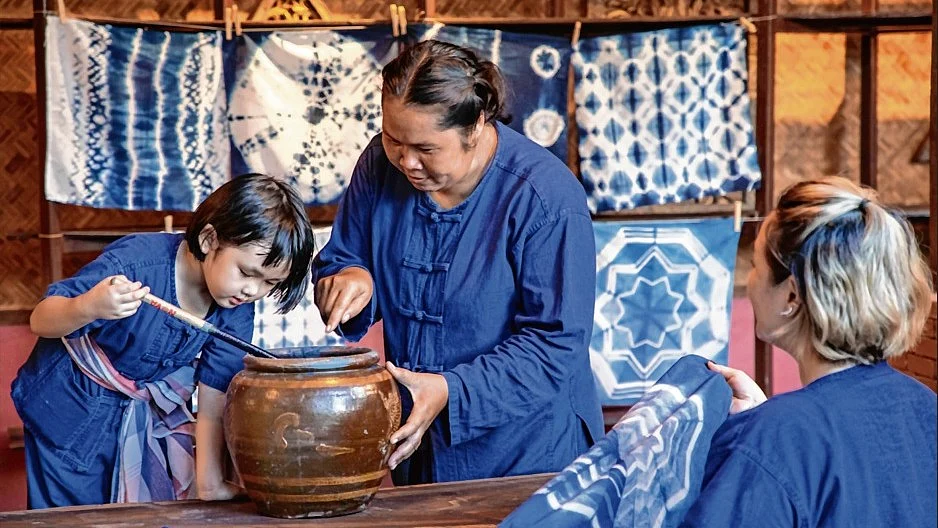Juvenile Idiopathic Arthritis (JIA), or Childhood Arthritis, is the most common chronic long-standing arthritis affecting the paediatric age group below 16 years. With an estimated occurrence of approximately 48/100,000 cases in India, this condition can lead to joint pain, stiffness, and inflammation. Further, it has also been found that 10-20 per cent of people having adult arthritis have their initial presentation in the early age group (<16 years). However, a critical difference between arthritis in adults and JIA is that children can outgrow their condition, while adults must live with it.
The exact causes of JIA are uncertain, although experts believe it is associated with an active immune response, which leads to joint hyperactivity and inflammation, thereby causing tissue destruction. In people who suffer from autoimmune diseases, the immune system attacks harmless cells, thinking they're dangerous invaders, which can lead to various types of sickness.
Certain triggering events like exposure to infectious agents (including viruses and bacteria that cause gastrointestinal infection), administration of antibiotics, vaccination or trauma can initiate an episode of arthritis in children. Several studies have even documented genetic associations to JIA as well. The disease may be Oligoarticular (involving ≤ four joints) or Polyarticular (involving ≥ five joints) and generally lasts more than six weeks. It is said that JIA tends to affect girls more, along with children who have a positive family history of chronic arthritis or Psoriasis.
Symptoms of JIA
Childhood Arthritis mainly affects the knees and ankles of the patient, and its symptoms are varied depending on the type of JIA. The most common symptoms include pain, swelling, tenderness and stiffness of large (knee, ankle) and small joints (wrist and hand). Limping while walking, especially after getting up in the morning or prolonged sitting, maybe a cause of concern and should be brought to a doctor's attention immediately.
Besides these, signs of JIA may also include:
Fever and uveitis (inflammation in the front of the eye)
Skin rash
Nodules
Pitting of nails
Swelling of fingers and toes
Further, systemic JIA can also cause liver and spleen enlargement (Hepatosplenomegaly) along with inflammation in the heart (Pericarditis), which can be fatal if untreated.
The diagnosis
A paediatrician or healthcare professional can diagnose JIA by examining the patient physically and conducting essential medical tests. They may also order various diagnostic tests, such as:
Blood investigations: These include Complete Blood Count (CBC) test, Erythrocyte Sedimentation Rate (ESR) test and C-reactive protein (CRP) test. While ESR shows if a person has inflammation, the CRP test measures the amount of C-reactive protein (CRP) in the blood. The liver produces CRP in response to inflammation.
Rheumatoid Factor Test: This test helps detect the presence of rheumatoid factor, an antibody produced by the immune system. If the test is positive, it indicates a rhematoid arthritis in the patient.
Antinuclear Antibody (ANA): An ANA test is a blood test conducted for autoimmune diseases. This test searches for antinuclear antibodies in the blood. These antibodies are proteins that the human immune system makes so that it can fight foreign substances like viruses and bacteria. However, an antinuclear antibody will attack healthy cells in the body. Since it targets the nucleus (centre) of the cells, it is called antinuclear. Although it is expected to have a few antinuclear antibodies in the blood, a considerable presence is a sign of an autoimmune disorder like JIA.
HLA-B27 test: This test detects genetic markers associated with enthesitis-related JIA.
X-ray or MRI scan: Imaging tests like X-ray and MRI scans can rule out any other possible conditions causing joint inflammation or pain, such as infections and fractures.
The treatment
After getting a positive test result for JIA, most of the prognosis and treatment plan will involve four significant goals: decreasing inflammation, effective pain management, improving joint function and preventing further damage.
Various treatment methodologies are available to manage and minimize the long-term effects of JIA. In most cases, a combination of these methods can go a long way in helping relieve the pain and restore a good quality of life. These include:
Medical treatment: The management of JIA involves pharmacological agents such as Nonsteroidal Anti-Inflammatory Drugs (NSAIDs) followed by Disease-Modifying Anti-Rheumatic Drugs (DMARDs, most often Methotrexate) and Corticosteroid Intra-Articular Injection.
Also, suppose the patient has polyarticular and systemic variants of JIA, patients may be recommended to use biological agents such as anti-TNF and anti-IL1β/IL6, demonstrating improved treatment outcomes. In addition, the use of Disease Modifying Anti-rheumatic Drugs (DMARDs) and physical agents such as T-cell inhibitors, anti-TNFα agents, IL1 and IL6 blockers, and JAK inhibitors have significantly improved the clinical management of JIA.
Lifestyle remedies: While regular exercise and a balanced diet are essential for healthy living, it is highly recommended for children with JIA. They can cope better with their symptoms and reduce the risk of future complications. Parents of children with JIA should create a custom diet plan with the doctor treating their child so that they can adjust the calories depending on their medical treatment (some drugs for JIA might cause weight loss). Also, regular low-impact exercises like walking and swimming should become integral to the child's routine. It is best to consult specialists for diet and exercise, as individual case treatments and conditions may vary.
Physical therapy: A physical therapy session can help a child having JIA to build strength and restore flexibility in their stiff, sore joints. They can also work with the healthcare provider to prevent joint damage or bone/joint growth abnormalities so the child can have an active and productive lifestyle.
The future
The clinical and epidemiological profile of childhood Arthritis is quite varied, particularly in India. The high cost of immunological therapy may prevent low socio-economic patients from seeking treatment that can lead to crippling and disabling Arthritis in adulthood. In the coming days, the advent of novel and targeted biologics will pave the way for an individualized approach for each patient, leading to positive treatment outcomes.















